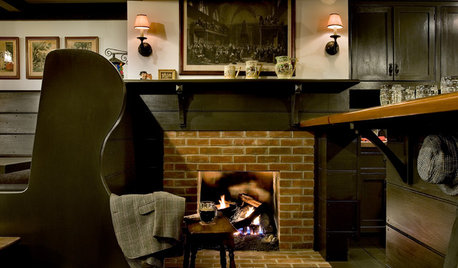wrong conduit, or no conduit?
pharkus
13 years ago
Related Stories

DESIGN DICTIONARYConduit
A conduit inside a building serves as a channel for electrical cables and wires
Full Story0

LOFTSDIY Spirit Reinvents an Industrial Home
Armed with a detailed plan from a designer, this homeowner rolled up his sleeves and transformed his Edmonton loft space
Full Story
BASEMENTSBasement of the Week: London Pub Ambience in Upstate New York
Dark as a Guinness stout and cozy as a Shetland sweater, this U.K.-style basement bar has everything a pub lover could want
Full Story
BATHROOM DESIGNHow to Settle on a Shower Bench
We help a Houzz user ask all the right questions for designing a stylish, practical and safe shower bench
Full Story
GREEN BUILDINGWhy You Might Want to Build a House of Straw
Straw bales are cheap, easy to find and DIY-friendly. Get the basics on building with this renewable, ecofriendly material
Full Story
LANDSCAPE DESIGNWhen Less Is Really More in Your Garden
8 ways you can make a powerful garden statement by embracing simplicity and surroundings
Full Story
LANDSCAPE DESIGN5 Tweaks for Updating Your Wood Deck
These improvements can enhance your deck’s look, feel and function
Full Story
CONTRACTOR TIPSYour Complete Guide to Building Permits
Learn about permit requirements, the submittal process, final inspection and more
Full Story
KITCHEN DESIGNKitchen of the Week: Warm Serenity in an Entertaining-Friendly Space
A subtle and sophisticated Sausalito kitchen has dual islands and plenty of storage
Full Story
BATHROOM DESIGNWarm Up Your Bathroom With Heated Floors
If your bathroom floor is leaving you cold, try warming up to an electric heating system
Full StorySponsored
Central Ohio's Trusted Home Remodeler Specializing in Kitchens & Baths
More Discussions










hexus
lbpod
Related Professionals
Avon Lake General Contractors · Cumberland General Contractors · Dunedin General Contractors · El Sobrante General Contractors · Florida City General Contractors · Kentwood General Contractors · Port Saint Lucie General Contractors · Selma General Contractors · Tabernacle General Contractors · West Whittier-Los Nietos General Contractors · Little Ferry Solar Energy Systems · Eden Prairie Solar Energy Systems · Herndon Home Automation & Home Media · Leesburg Home Automation & Home Media · South Lake Tahoe Home Automation & Home Mediasmithy123
pharkusOriginal Author
DavidR
smithy123
smithy123
mike_kaiser_gw
pharkusOriginal Author
brickeyee